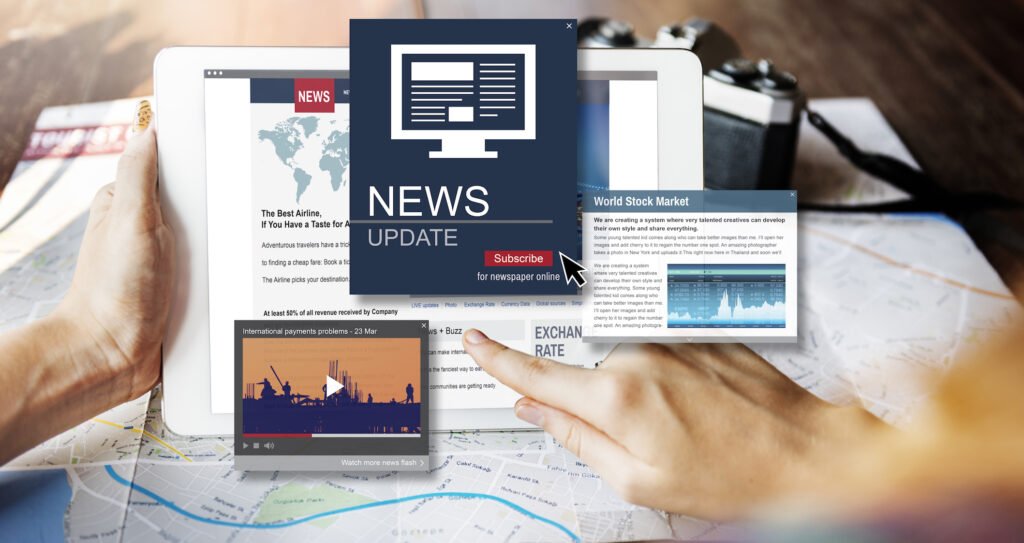In the fast-changing digital world, “News & Updates” is much more than just a way to talk to people. It is a flexible framework for getting fast, useful, and trustworthy information to people all around the world. The way news and updates are delivered affects how people read, share, and believe them. This is true whether it’s a new geopolitical event, a breakthrough in AI, or a new product from a company.
The way news is shared has changed because people have shorter attention spans and want content that is available right now. News cycles today are shorter, more responsive, and based more on data-driven decisions. Updates have become an important part of being open and honest, adding continuity, corrections, or deeper insights to the initial headlines.
The Role of Timeliness and Accuracy in News
One of the main problems in journalism is finding the right balance between speed and accuracy. Digital-first sites like The Guardian, Reuters, and The New York Times use strict editorial standards to make sure that real-time news does not lie. Content management systems (CMS), automatic publishing tools. And AI-driven alerts are all important technologies that help make sure updates happen on schedule without losing quality.

When something big happens, like a presidential election or an emergency health issue, news outlets rush to cover it. But after the first wave of reporting, there are often updates that give more information, clear up claims, or correct false information. This layered approach not only makes things more credible, but it also makes the user experience better by staying relevant over time.
Building Authority Through Structured Content and Semantic SEO
If digital publications and businesses want to get more people to see their news and updates, they need to use semantic SEO tactics. This means that you need to do more than just stuff keywords. You need to focus on topical relevance, keyword grouping, and Latent Semantic Indexing (LSI) integration.
When optimising for the keyword cluster “News & Updates. You should naturally incorporate related terms like “breaking news.”Real-time reporting,” “press coverage,” “ongoing story,” and “latest headlines” throughout the post. These LSI keywords back up the main idea and let search engines know that the material is complete and trustworthy.Using structured data like schema.org/Article and schema.org/NewsArticle also helps search engines figure out what kind of material it is and what it is for. Adding characteristics like “headline,” “datePublished,” “author. And “publisher” makes it more likely that your article will be highlighted in Google News or appear in the top stories.
Meeting User Intent Across Multiple Layers
A powerful “News & Updates” article must serve different user intents simultaneously. Some readers are looking for the most recent developments (navigational intent), others are trying to understand a complex issue in depth (informational intent), while some seek engagement features like newsletter subscriptions or alerts (transactional intent).
For example, during a product launch by a major tech company like Apple or Tesla, the initial press release may attract users who want immediate facts. Updates throughout the day—including expert analysis, stock impact, or consumer reactions—appeal to users seeking richer context. Including subscription options or links to related events supports continued user engagement and conversion.
Integrating Internal and External Authority
How well content is related to other content in its ecosystem is also important for establishing topical authority. Links to other items on your site, like explainers, interviews, or data visualisations. Encourage people to explore and tell search engines that your site has a lot of information. Links to trustworthy sites like BBC News, the Pew Research Centre, or the Reuters Institute from outside your site make it more credible and trustworthy.
For example, when talking about journalism standards, using the Poynter Institute’s ethical principles or the AP Stylebook not only provides value but also supports E-E-A-T (Experience, Expertise, Authoritativeness, and Trustworthiness), which is a key principle in Google’s search quality recommendations.
The Evolving Nature of Updates
Modern updates are no longer limited to text-based corrections. With multimedia integration—such as video clips, podcast transcripts, embedded tweets, and real-time infographics—publishers are expanding the definition of what constitutes an update. Platforms like YouTube and TikTok now serve as hybrid spaces where updates are delivered visually and interactively.

Tools like Google Trends, TweetDeck, or real-time newsroom dashboards help monitor public discourse and optimize content deployment. As such, publishers can respond faster to developing stories, issuing updates that reflect not only new facts but also shifts in audience sentiment.
Final thoughts
The best digital magazines and newspapers today have flexible, open workflows. To keep things obvious, news items usually have time stamps, explicit authorship, correction logs, and comment areas. To keep things consistent and improve SEO, updates are often added right to the original post.
Headlines that are clear and full of keywords, like “Latest Tech Industry Updates: AI. Startups, and Market Trends,” make it easier for people to find your content and click on it. Embedded FAQs, which address typical user questions in clear, easy-to-read language, make the user experience even better.
















